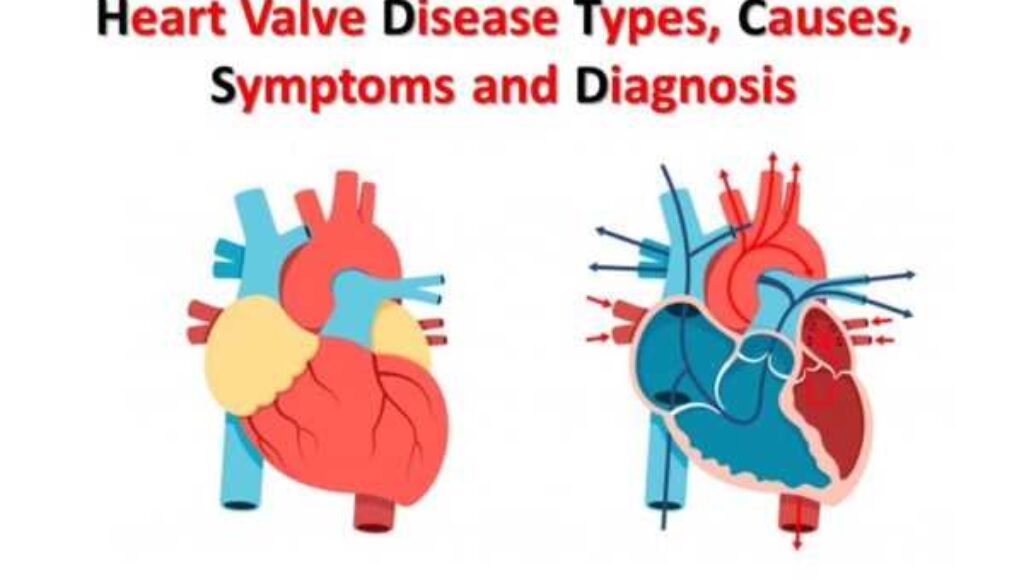Heart Valve Disease Types, Causes, Symptoms & Diagnosis
Heart Valve Disease is a condition wherein one or more of the heart valves do not work properly. This means, they don’t open and close properly. When this happens, the blood flow through the heart and to the rest of the body is disrupted.
The heart valves are tissue flaps (just like doors) that open and close with each beat. The function of heart valves is to ensure that blood flows in the right direction through heart chambers and to the rest of the body.
The heart has four valves: The aortic valve, tricuspid valve, mitral valve, and pulmonary valve. These valves keep blood flowing in the correct direction.
What are the signs and symptoms of heart valve disease?
In some people, the disease progresses silently without causing any signs and symptoms. The disease can go unnoticed for many years. Signs and symptoms if present may include:
- Chest pain
- Irregular heartbeat
- Shortness of breath (when involved in any activity or at rest)
- Heart murmur (abnormal sound)
- Dizziness
- Swelling of feet and ankles
- Fatigue
- Fainting
- Abdominal swelling
- Palpitations (feel like irregular heartbeats, rapid heart rhythm, skipped beats, or a flip-flop feeling in the chest)
What are the causes of heart valve disease?
Your heart valves (four valves) ensure the proper flow of blood through the heart in the correct direction. The tricuspid valve, mitral valve, aortic and pulmonary valves perform this function efficiently. The leaflets or cusps of each valve open and shut properly during each heartbeat. When they do not open and shut properly the blood flow through the heart and to the body is disrupted. the disease of heart valves can disturb the functioning of heart valves.
Heart Valve Disease Types: If the disease is present at birth, it is known as a congenital disease (malformed leaflets, wrong size of the valve) and if heart valve disease develops during one’s lifetime, it is known as acquired heart valve disease. Several other heart conditions and infections can also cause this condition. Congenital heart valve disease mostly affects pulmonic or aortic valves. Bicuspid aortic valve disease is a congenital valve disease that affects the aortic valve.
Acquired valve disease
Some people develop heart valve disease at some point during their lifetime. Which means, the heart valves which were once normal may become diseased. Some changes in the size, shape and structure of the heart valve occur due to infections (endocarditis or rheumatic fever).
Some untreated bacterial infections such as strep. Throat causes rheumatic fever. Due to this infection, the heart valves become rigid, stick together and thickened – valvular regurgitation (valvular insufficiency).
Endocarditis: Some bacteria enter the bloodstream and infect the heart valves, grow and multiply and thus make changes in the size, shape and structure of the heart valves. This happens due to severe infections, surgery or dental procedures.
High blood pressure, connective tissue diseases, aortic aneurysms, cardiomyopathy (heart muscle disease), coronary artery disease and heart attacks are the other causes of heart valve disease. Radiation exposure, tumours and certain drug use are the other less common causes of heart valve disease.
What are the types of Valvular Heart Disease?
Heart Valve Disease Types – Regurgitation and Valvular stenosis
Leaky Valve (Regurgitation) or Valvular insufficiency (incompetence)
In this type of condition, the valves do not close properly or tightly. Some blood leak backwards across the valve when the valves do not close properly. Depending on the valve which is affected, the condition is known as aortic valve regurgitation, mitral valve regurgitation, pulmonary regurgitation and tricuspid regurgitation. Your heart works harder to compensate for the leaky valve. Due to this defect, less blood flow to the rest of the body.
Valvular stenosis: When the leaflets or cusps of the valve fuse or become stiff the valve opening becomes smaller than normal. Hardened or stenotic valves restrict blood flow. This heart valve condition is known as valvular stenosis. Due to narrowed opening, the heart works very hard to pump blood through the stenotic valves. Depending on the heart valve that is affected, the condition is known as aortic stenosis, mitral stenosis, tricuspid stenosis and pulmonic stenosis. Valvular stenosis can cause heart failure and other symptoms.
Diagnosis of Heart Valve Disease
A cardiologist physically examines the patient and also asks about the symptoms. Based on the symptoms and physical examination, the doctor may order some diagnostic tests – Echocardiography, Scanning or Angiogram. These tests help in the diagnosis of the condition. The tests may be repeated over time, to monitor the progress of the heart valve disease. The cardiologist makes a treatment decision based on the severity of the condition.
Bottom Line
Heart valve disease may or may not be associated with symptoms. Furthermore, symptoms do not always relate to the severity of the condition. Sometimes, a person may have symptoms, yet the disease is not significant. In some cases, there are no symptoms at all, yet the condition is severe, which requires treatment. Those who are at risk owing to a personal history of heart disease and infections should see their cardiologist regularly according to the instructions given by the doctor.




